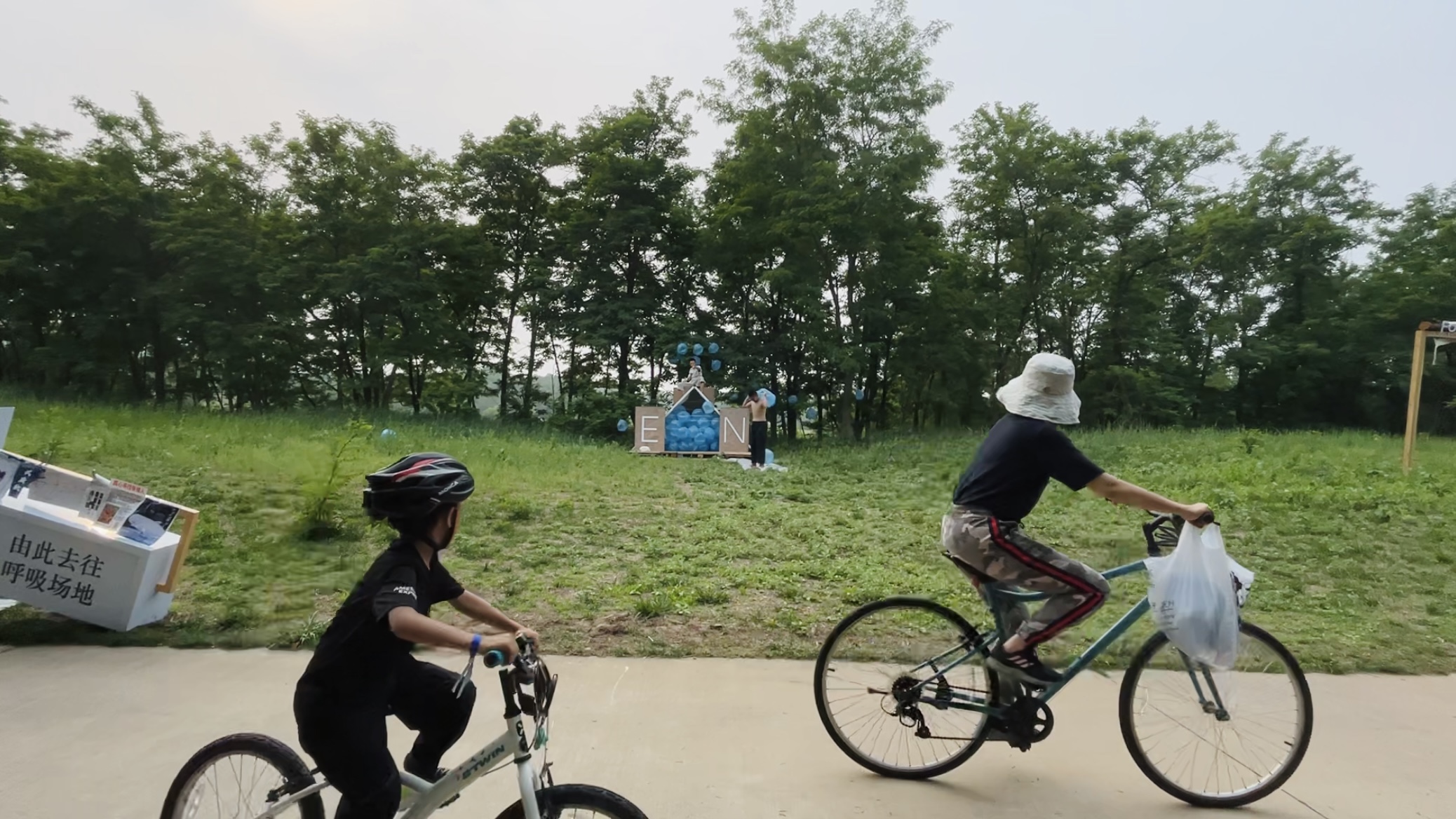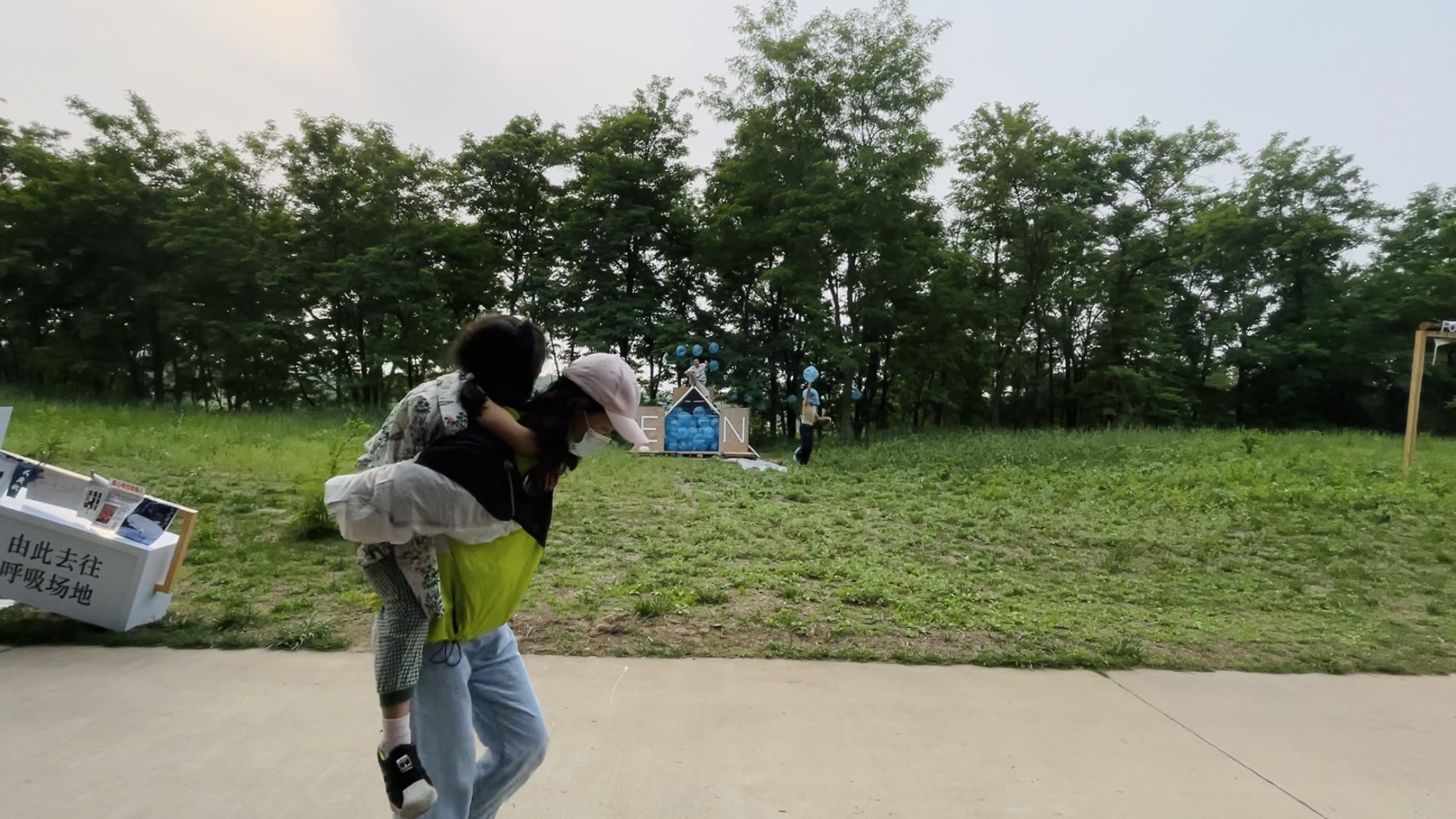Colorless Breath is a work I created in 2020. The issue of plastic waste in our oceans has been gaining increasing attention in recent years. The negative impact that plastic waste has on the living environment of marine life is profound and deeply concerning. As a dancer and choreographer, this issue has inspired me to create a dance work that explores the effects of plastic waste on marine life.
![]()
Plastic pollution can harm marine animals in several ways, including entanglement, ingestion, and disruption of habitats. Animals can become entangled in plastic debris, which can cause injuries, restrict movement, and lead to suffocation. Marine animals may mistake plastic debris for food, which can lead to ingestion and potentially fatal consequences. As plastic debris accumulates in the ocean, it can cause physical damage to habitats, and disrupt marine ecosystems. This can have a ripple effect throughout the food chain, as animals that rely on healthy marine habitats for survival may struggle to find food or become more vulnerable to predators. The gravity of this issue is what inspired me to create Colorless Breath which explores the impact of plastic waste on marine life. Through movement and site design, I aim to convey the devastating effects of plastic pollution on marine ecosystems and to raise awareness of the urgent need for action to address this issue.
This piece I performed in three different spaces with the same material ( recycled plastic bags): a public space in a wetland park, a white square room, and a shooting venue.I felt the influence of different performance spaces on the creation of my works.
Plastic pollution can harm marine animals in several ways, including entanglement, ingestion, and disruption of habitats. Animals can become entangled in plastic debris, which can cause injuries, restrict movement, and lead to suffocation. Marine animals may mistake plastic debris for food, which can lead to ingestion and potentially fatal consequences. As plastic debris accumulates in the ocean, it can cause physical damage to habitats, and disrupt marine ecosystems. This can have a ripple effect throughout the food chain, as animals that rely on healthy marine habitats for survival may struggle to find food or become more vulnerable to predators. The gravity of this issue is what inspired me to create Colorless Breath which explores the impact of plastic waste on marine life. Through movement and site design, I aim to convey the devastating effects of plastic pollution on marine ecosystems and to raise awareness of the urgent need for action to address this issue.
This piece I performed in three different spaces with the same material ( recycled plastic bags): a public space in a wetland park, a white square room, and a shooting venue.I felt the influence of different performance spaces on the creation of my works.
When you are in different spaces, even if you use the same items, materials, or objects, you can accept different information and process them, make decisions, and involve a trade-off.
In the wetland park, a small wooden platform on the lawn was our performance space. Every person who passed by the space became the audience. They could make a choice to watch, take photos, sit on the lawn, or just pass by. In that performance, performers need to recognize the information changed, improvise, and learn what to adjust.
The white square room is six meters in length and six meters in width. It's a narrow space. I put approximately 700 hundred plastic balls in it. The performer moved with the balls in the space. The audience stood outside the space. When the performer moved, the balls also had their movement, they rolled and extended the performance space. In this performance, the performer was more deeply into their feelings.
![]()
I also made a dance film for this work with collaborators. I worked in the shooting room because it was a huge, and all-black space, similar to a black box. Unlike the previous two performance spaces, I did not create a narrow space but took advantage of the high height of the shooting space to shoot the process of plastic balls falling and floating.
For me, “Colorless Breath” was a good attempt to deal with uncertainties and dangerous situations. I'm still exploring it.
In the wetland park, a small wooden platform on the lawn was our performance space. Every person who passed by the space became the audience. They could make a choice to watch, take photos, sit on the lawn, or just pass by. In that performance, performers need to recognize the information changed, improvise, and learn what to adjust.
The white square room is six meters in length and six meters in width. It's a narrow space. I put approximately 700 hundred plastic balls in it. The performer moved with the balls in the space. The audience stood outside the space. When the performer moved, the balls also had their movement, they rolled and extended the performance space. In this performance, the performer was more deeply into their feelings.

I also made a dance film for this work with collaborators. I worked in the shooting room because it was a huge, and all-black space, similar to a black box. Unlike the previous two performance spaces, I did not create a narrow space but took advantage of the high height of the shooting space to shoot the process of plastic balls falling and floating.
For me, “Colorless Breath” was a good attempt to deal with uncertainties and dangerous situations. I'm still exploring it.






The following are questions I identified in the process:
How to feel the same things in different spaces?
How to deal with the new experience of your movement?
How to influence your ideas?
How do you have to take care of the different spaces?
... ...